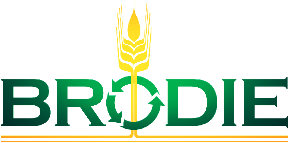Back in 2009 when the U.S. was struggling with low milk prices, a camera crew from a local news station stopped by my family’s farm to talk to a dairy producer to see if times were really as tough as everyone said it was.
When the interview was over my dad walked the camera crew around the farm. He showed them the freestall barn and milking parlour. They went to see the baby calves and the heifer barn, and finally he took them past the dry cow barn.
The news anchor was soaking in this newfound knowledge of the dairy industry and when he saw this pen full of 50 dry cows clearly separated from the rest of the herd, he couldn’t help but ask, “If you need to produce more milk to cover your expenses, why don’t you milk these cows?”
When I first heard this story I chuckled at how inept this news anchor was in his understanding of a cow and her stages of lactation. But the more I think about it, people throughout the dairy industry have asked and answered that same question many times.
Research journals are full of studies to determine the optimal dry period for a dairy cow. If it were too long, a farm would miss out on additional milk from that cow, and if too short, then production in subsequent lactations could suffer.
As those in the dairy industry understand, not producing milk is almost more important than producing milk, pending, of course, it happens as the cow is gearing up for her next lactation. And really, who doesn’t need a little R&R from time to time?
This is when the cow goes on holiday to rest, finish growing her calf and prepare her mammary system. It’s amazing then, knowing how critical this time is for the future success of the cow, that dry cows tend to be one of the most overlooked groups on the farm.
At Progressive Dairyman, we recognize this as an important stage of life for a dairy cow and therefore we are introducing a new focus topic on dry and transition cows in this issue. Click here and click here to read through the articles to gather more information on how to manage cows during this crucial period.
Also new to this issue are spotlights from Dairy Farmers of Canada. To view these sections click here and click here, these will appear on a regular basis and we hope they will help keep you updated on policy, research and promotion efforts that DFC is busy providing for dairy farmers across the country.
In addition, this issue brings to you an update on the Hoof Health Project that has taken place in Ontario, Alberta and British Columbia. Some of you may have participated in this project and we’re pleased to report the findings thus far and what the next steps of the program will be. Click here to read more information.
Lastly, we’re happy to highlight the farms that will open their doors to you on Jan. 23 as a part of the BC Dairy Expo. If you happen to be on the West Coast later this month, we encourage you to take this day to visit as many of these farms as possible. Click here for some of their innovative farm features.
Here’s to new and exciting things to come in the New Year!









